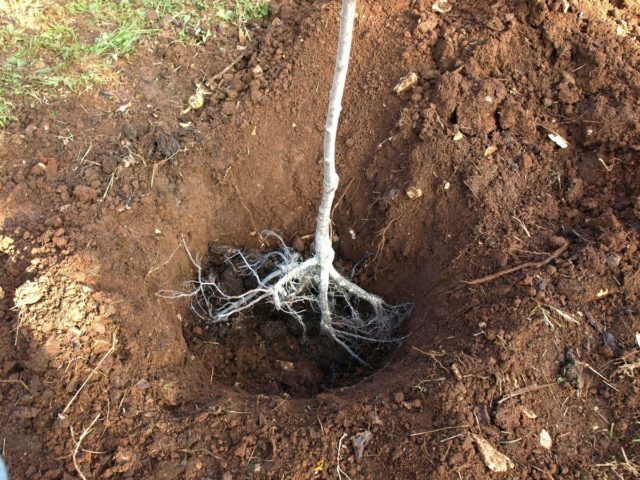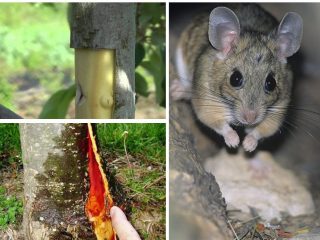Content
The Firebird apple tree variety is especially popular among gardeners in the Western Siberian region of the country. This is explained by stable yields in difficult climatic conditions, increased resistance to diseases and ease of care. This species belongs to the semi-cultivated category, that is, it combines the qualities of wild Siberian apple trees and cultivated species. This feature explains the increased viability of the variety and stable fruiting in unfavorable conditions.

Firebird - a summer crop
History of selection
Work on breeding the Firebird apple tree was carried out by employees of the Siberian Institute of Horticulture named after. M.A. Lisavenko. This type of crop was obtained in 1963 on the basis of such varieties as Autumn Joy of Altai and Gornoaltaiskoe.
The main characteristics of the Firebird were carefully studied for 14 years at the Barnaulskoye educational enterprise. The results obtained became the basis for registering the official standard for this type of apple tree. And only in 1998 the Firebird was included in the State Register.
Characteristics of the Firebird apple tree
This variety has strengths and weaknesses, so when choosing it, you need to study them. This will allow every gardener to understand how valuable this species is and what difficulties can be encountered when growing it.
Appearance of fruit and tree
The firebird forms a medium-sized compact tree, the branches of which are fixed at an acute angle. Its height is 3 m, which it reaches at the age of 7 years, and its diameter does not exceed 2.5 m. The crown of this apple tree is semicircular, not prone to thickening.
The branches are quite thick, but are rarely located on the trunk. The Firebird apple tree bears fruit on ringlets of simple and complex types. The color of the trunk bark and main branches is gray-brown. The shoots are of medium thickness, with an edge on the surface.
The leaves are round, wrinkled, green, shiny. The plates are briefly pointed, curved downwards, with pubescence on the reverse side. There is wavyness along the edge. The petioles of this variety are of medium length. Stipules are small, lanceolate.
The fruits of the variety are one-dimensional, small. There is a large smoothed ribbing on the surface. The average weight of apples is 35-50 g. The main color is yellow. The cover is bright red, blurred over the entire surface. The skin is smooth with a rich bluish coating. The peduncle is medium long, pubescent. The pulp is juicy, has a fine-grained consistency, medium density, and creamy color. Apples of the Firebird variety have a large number of green subcutaneous dots that are clearly visible.
Lifespan
The productive age of the Firebird apple tree is 15 years. Lifespan directly depends on care.If all rules of agricultural technology are observed, this indicator can be extended for 5 years, and if ignored, it can be shortened for the same period.
Taste
The taste of Firebird apples is sweet and sour, pleasant. The fruits contain a large amount of P-active components, vitamin C. Apples also contain tannins and fruit sugars. But the concentration of pectin and titratable acids is quite insignificant.

The fruits of this variety at an early stage of development are formed only on the lower branches
The Firebird apple tree has a universal purpose, so the fruits can be eaten fresh or used for processing. When exposed to heat, the pulp retains its structure. The variety is best suited for jam and juice.
Growing regions
The Firebird apple tree is recommended for cultivation in the Altai Territory. And also in the following areas of the West Siberian region:
- Kemerovo;
- Tomskaya;
- Novosibirsk;
- Omsk;
- Tyumen
In addition, the variety can also be grown in the middle zone. The Firebird apple tree shows good productivity in conditions of short summers, sudden temperature changes and cool springs, so it is not suitable for growing in the southern regions.
Productivity
Fruiting of the Firebird apple tree occurs annually with enviable stability. The yield of a tree up to 10 years old is about 20.1 kg, and with each subsequent year this figure increases and by 15 years it reaches 45 kg.
Frost resistance
The Firebird apple tree has an average level of frost resistance. But when the temperature drops to -40 degrees, the bark freezes slightly. These signs become visible.In this case, the tree does not die, but the restoration process lasts 1 year.
Resistance to diseases and pests
Due to the fact that the Firebird apple tree is obtained from wild Siberia, it exhibits high resistance to diseases and pests. But in order to eliminate the possibility of damage due to inappropriate growing conditions, it is necessary to carry out preventive treatments on the tree.
Flowering period and ripening period
This variety begins to bear fruit fully 5 years after planting. According to the timing of fruit ripening, the Firebird is a summer species. The tree blooms annually in late spring and early summer, when the temperature confidently remains at +15 degrees. The duration of the period is 6-10 days.
The Firebird reaches harvest maturity on the 20th of August, so harvesting can be carried out over the next 2 weeks.
Pollinators
This apple tree variety is self-sterile. Therefore, you need to take this into account when planting. For stable fruit set, it needs the following pollinating varieties:
- Gift for gardeners;
- Altai ruddy;
- Cherished.
Transportation and keeping quality
Since Firebird is a summer variety, apples are not suitable for long-term storage. The maximum shelf life of the fruit is 1 month at a temperature not exceeding +15 degrees. Subsequently, the pulp becomes dry and friable, and also loses its taste.
The harvest of this variety can be transported only at the stage of technical maturity, so as not to spoil the presentation of the apples.
Advantages and disadvantages
The Firebird apple tree has clear advantages and disadvantages compared to other varieties of the crop. Therefore, when choosing this variety you need to pay attention to them.

Some gardeners note that the Firebird is suitable for making wine
Main advantages:
- good taste of fruits;
- high resistance to scab and pests;
- simultaneous giving of apples;
- stable yield;
- attractive appearance of the fruit;
- resistance to adverse climatic conditions.
Flaws:
- average frost resistance, as for half-crops;
- short storage period for apples;
- small fruit size;
- rapid ripening on the tree.
Landing
In order for the Firebird apple tree to fully develop in the future, it is necessary to plant it correctly. This should be done in the spring, after the temperature rises above +5-+7 degrees and the soil thaws. The tree should be placed on the south or east side of the site, protected from drafts. The groundwater level must be at least 2.0 m.
In the spring, 2 weeks before planting, you need to dig a hole 80 cm deep and 60 cm wide. Fill it with a mixture of turf, humus and peat, taking the components in a ratio of 2: 1: 1. And also add an additional 200 g of wood ash, 30 g of superphosphate and 15 g of potassium sulfide, mix thoroughly.
Landing algorithm:
- Make a hill in the center of the planting hole.
- Straighten the roots of the seedling and, if necessary, cut off damaged areas.
- Place it on a raised platform and install a support nearby at a distance of 20-30 cm from the root.
- Sprinkle with soil so that the root collar is 2-3 cm above the soil level.
- Compact the top soil at the base of the seedling.
- Water generously.
- Tie the seedling with twine to the support.
Growing and care
To grow an apple tree, you need to provide the tree with comprehensive care. It includes regular watering as needed throughout the first year after planting. This should be done 2 times a week. Then it is necessary to loosen the soil in the root circle to improve air access to the roots.
Also, during particularly hot periods, mulch from humus or grass clippings should be used. This measure will prevent overheating of the roots and retain moisture in the soil.
In the future, every spring it is necessary to carry out preventive treatment of the tree. To do this, dissolve 700 g of urea and 50 g of copper sulfate.

Timely spraying of the crown helps to avoid many problems
Feeding seedlings should begin at the age of three. To do this, in the spring, add 35 g of superphosphate, 15 g of potassium sulfate, 35 g of ammonium nitrate to the root circle, with further incorporation into the top layer of soil. With abundant fruiting, it is necessary to use organic matter. With the arrival of spring, it is necessary to annually prune broken and damaged shoots.
Collection and storage
The Firebird crop must be harvested during the technical ripeness of the apples, since when fully ripe they begin to fall off. The fruits must be placed in wooden boxes, covered with straw. For long-term storage, ensure a temperature of +15 degrees.
Conclusion
The Firebird apple tree variety is ideal for regions with harsh climatic conditions, as it easily tolerates temperature changes and at the same time shows stable fruiting.At the same time, the crop does not require specific care, so any novice gardener can grow this tree on the site.











